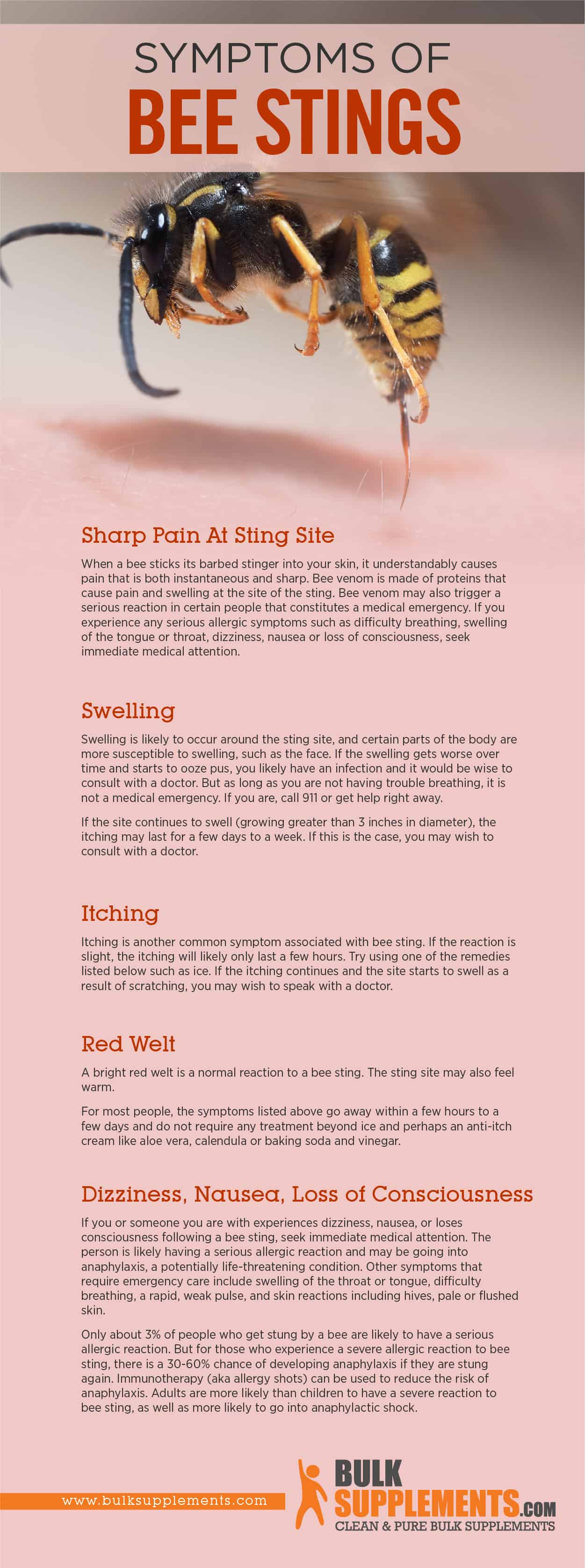
Moreover, they did not develop the anaphylactic reactions characteristic of severe allergies.

The immunized mice had less hypothermia and were three times more likely to survive than the control mice. Three weeks later, they injected both groups of mice with a potentially lethal dose of venom, similar to five bee stings. The mice developed more venom-specific immune cells, and higher levels of IgE antibodies against the venom, than control mice injected with a salt solution. To find out whether adaptive immune responses could help mice resist bee venom, Marichal and Starkl first injected mice with a low dose of venom, equivalent to one or two stings. This idea, known as the toxin hypothesis of allergy, was first proposed by Margie Profet in 1991, but was largely ignored by immunologists until recently. The researchers hypothesized that IgE might be required for protection against a lethal sting, and that allergies are an extreme, and maladaptive, example of this type of defense. “We and others speculated that there should be some very positive evolutionary pressure to keep these cells and these antibodies, because if they were just bad and deleterious, they would have been eliminated.” “It was kind of a dogma that most IgE-related responses are detrimental,” said postdoctoral scholar Philipp Starkl, PhD, the other lead author. “The functions of IgE and mast cells are mostly known in the context of allergies,” said Thomas Marichal, DVM, PhD, a postdoctoral scholar and co-lead author of the study. In allergic reactions, a type of antibody called IgE binds to the surface of mast cells and prompts them to initiate an adaptive immune response when exposed to the antigen recognized by that IgE. Adaptive immunity is usually a faster, more specific and more effective form of defense than innate immunity. By contrast, during an adaptive immune response, the immune system generates antibodies that recognize the invading pathogen or toxin this process makes it possible to vaccinate against infectious diseases. Such innate immune responses do not require prior immunization or the development of specific antibodies. In a previous study, the researchers found that mast cells produce enzymes that can detoxify components of snake venom, and that mast cells can also enhance innate resistance to honeybee venom. Immune cells called mast cells, which reside in most of the body’s tissues, are poised to unleash signals that turn on defense responses when a pathogen or toxin intrudes. Innate immune responses occur in subjects exposed to a foreign substance, such as a pathogen or a toxic material like venom, for the first time. The study builds on earlier work by the researchers characterizing the innate immune response to snake venom and honeybee venom. The study is the first experimental evidence that the same immune response involved in allergies may have evolved to serve a protective role against toxins.


24 in Immunity, the researchers show that mice injected with a small dose of bee venom were later resistant to a potentially lethal dose of the same venom. New findings by Stanford University School of Medicine scientists may provide an evolutionary explanation for severe allergic reactions. For most people, a bee sting causes temporary pain and discomfort, but for those with a bee venom allergy, the consequences can be devastating: They experience anaphylactic shock, including a drop in blood pressure, itchy hives and breathing problems, and may die if not promptly treated.


 0 kommentar(er)
0 kommentar(er)
